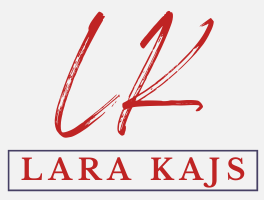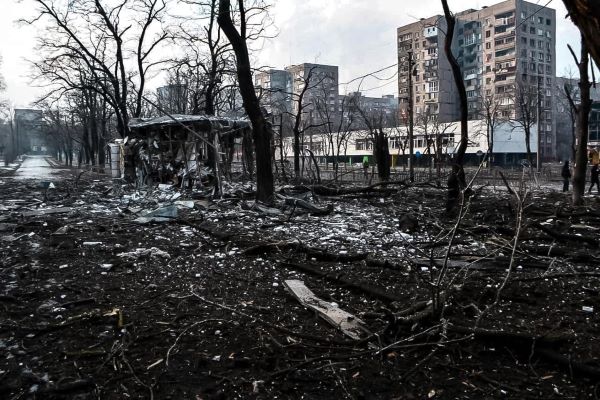Washington, DC., February 28, 2023 ——
Since WWII, the world has operated largely by a rule-based international system. It means there is a shared commitment by States to conduct their interests under an existing set of rules. It’s a system of global governance and the United Nations is at the center of this rule-based system. It guarantees that nations have sovereign rights. They have the right to live peacefully, and they have the right to not be invaded by another country. And yet, for a year now, the world has watched as Putin’s war continues to subject Ukraine, its peaceful neighbor, to heinous acts of violence.
But this is not the first time Putin has invaded Ukraine. In 2014, Russia launched an assault against the country, during which Putin managed to gain control of a portion of Ukrainian territory and slowed Ukraine’s path toward Euro-Atlantic integration. Although the Minsk Protocol ended the violence of the 2014 conflict, a condition for peace called for Ukraine to accept the loss of Crimea and much of Donbas. And while governments believed that was the end of it, Russia learned from the 2014 invasion and the settlement, that it could use force and violence to get what it wanted – land – with impunity.
It’s All About the Land
Putin’s vision is to reestablish the old Russian Empire, which at one time, spread from the Arctic Ocean to the Black Sea, and from the Baltic Sea to the west and included Alaska, Hawaii, and parts of California. But Putin’s vision is based on a map and boundaries that no longer exist. It’s not realistic. However, his multiple invasions of Ukraine serve to help rebuild his vision and he does not care how many lives it costs, or the atrocities – including war crimes – he commits to do it. From Putin’s perspective, size matters, and he needs real estate to accomplish his dream.
While it has been argued that Putin’s war and actions are an attempt to return to the Cold War, the fact is the world is much different today, than it was during the Cold War era. First, there are many powerful nations today. The Cold War era centered around two adversarial superpowers. Today’s power nations come from all corners of the globe and include India, the European Block, Africa, South America, and Asia; each of which is influential, has growing economies, and in several cases has nuclear capabilities. Today, China has ten times the GDP than the former Soviet Union ever had at the height of the Cold War. It is also necessary to consider the challenges the world faces in the twenty-first century, including other conflicts, crises, and global climate crises.
Global Reach
For a year now, the world has watched as Ukrainians have bravely stood together with determination and resolve to defend their nation. Without a doubt, Putin underestimated the Ukrainian people. In his mind, he banked on the fact that it would be over within a few weeks to a few short months.
However, instability and conflict in Europe affect the global community. So, it is in the best interest of the international community that Europe remains secure and stable. Russia’s war against Ukraine has impacted food resources, trade, and transportation in the region. Ukraine is one of the world’s largest grain producers, often referred to as the “world’s breadbasket.” The negative impact on grain production and trade has resulted in many vulnerable people in the Middle East and the Horn of Africa suffering severe starvation.
Deeper Consequence
But there is a deeper consequence of the war in Ukraine, that is perhaps more ominous. It sets the stage for other dictators around the world to take the same action. If they see that they have a blank check and can invade their neighbors, with impunity, what is stopping them? The longer Putin’s war continues the higher the risk that other governments will use violence to reach their goals. A prime example of this is the relationship between China and Taiwan.
Xi and Putin are both dictators and they do not support the ideologies of democracy and freedom. Both are trying to rewrite the rule-based international system, by using aggression to intimidate, threaten, and terrorize their neighbors, to seize another country: Putin in Ukraine and Xi in Taiwan.
The Nuclear Threat
Russia has the largest nuclear arsenal in the world. Despite threats to escalate the conflict, or to use nuclear weapons, it has not happened. Intel reveals that there are no indications that strategic positioning or nuclear movement has changed regarding Russia’s nuclear weapons. That is not to say it will not or cannot. Putin could still launch nuclear weapons, so let’s not minimize that valid point. However, to use a nuclear weapon on land that Russia considers its own, would be useless and damaging to Russia. Remember Chornobyl? Also, consider the international backlash that would ensue should Putin use a nuclear weapon against Ukraine. A better solution for Vladimir Putin would be for him to sue for peace and take credit for it, so he can save face with his own country.
However, the nuclear threat has proven to be effective as a deterrence. The US and other allies of Ukraine have resisted getting directly involved, even withholding advanced weapons because of Russia’s nuclear capabilities. Russia’s suspension of the New START Treaty reinforces the issue and provides additional deterrence against NATO involvement in the war.
Leverage
This war is not over and may not be over for some time. While support nations have worked together as a coalition to help Ukraine in its fight, there is so much more that needs to be done to ensure that Ukraine wins and can safeguard its sovereignty.
From a military perspective, Ukrainians need more fortifications, such as advanced fighter jets, long-range missiles, and rockets that Ukrainians can use to hit Russian supply lines. There needs to be increased training for Ukrainian forces. Modernizing Ukrainian forces while it is fighting a war, is not unlike surfing a fifty-foot wave on the North Shore, on your first day on a board. It’s not impossible but needs immediate strategic planning.
Russian military needs to be held to a disadvantage, to prevent it from being able to conduct offensives outside of its borders. Putin has lost approximately 60 percent of combat power and military forces. He is trying to rebuild now. There needs to be an increase of sanctions (with bite) against Russia, and they need to be enforced to prevent Putin from rebuilding the military and gaining momentum.
While Ukraine may be successful at pushing Russian forces out of Ukraine’s territory, there need to be lasting security guarantees. There should be an agreement that includes the US, Germany, France, the UK, and the EU as signatories, that an invasion of Ukraine will not be tolerated again.
Euro-Atlantic Integration
Over the years, there has been a lot of discussion about Ukraine joining the EU and NATO. Ukraine has expressed a strong desire to join both and has expedited a NATO application. However, the main issue here is that a nation cannot join either alliance if it is at war. Ukraine is prohibited at this time. After the war ends, and Ukraine fulfills all the criteria, it will likely be accepted into both. But until then, there needs to be a security umbrella for Ukraine.
Peace for Ukraine
The people of Ukraine have endured unimaginable war crimes and crimes against humanity. They have suffered rape (including children as young as four years old), forced deportation, and kidnapping of thousands of orphans to camps in Eastern Russia. Thousands of Ukrainians have been tortured, starved, terrorized, and mass executed. The Russian military is trying to break the will of the Ukrainian people.
In 2023, as the conflict continues, Ukrainians will continue to be at risk for injury, illness, and death. Russian air strikes and ground attacks will continue to leave millions without water and electricity. Basic services are extremely limited, or non-existent. Humanitarian response is frequently interrupted. The conflict created the world’s fastest displacement crisis in decades, leaving at least 6.6 million internally displaced, and at least 6.3 million displaced across Europe and elsewhere.
A peace agreement needs to be settled and the fighting comes to an end.
With gratitude… Lara
Photo credit: A street in Mariupol during the siege of the city in the course of the 2022 Russian invasion of Ukraine. War damages in Mariupol 12 March 2022 (01) by Ministry of Internal Affairs of Ukraine. Licensed under CC by 4.0
thinkingoutloud #PutinsWar #Ukraine #RuleBasedSystem #conflict #warcrimes
Lara Kajs is the founder and executive director of The Genocide Report, a nonprofit NGO in Washington DC. She is the author of Stories from Yemen: A Diary from the Field, and the forthcoming, Assad’s Syria: Displacement, Torture, and Mass Execution. Ms. Kajs frequently speaks about atrocity crimes, forced displacement, and international human rights. Follow and connect with Lara Kajs on Facebook, Instagram, X, and LinkedIn


4 comments